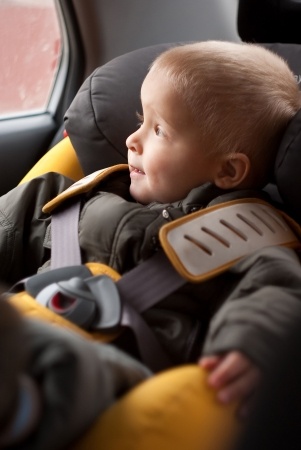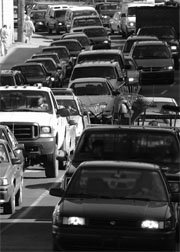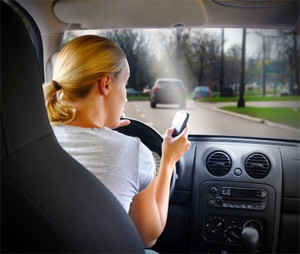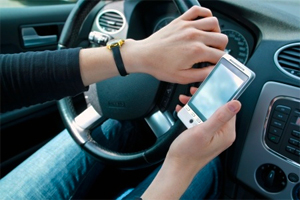Car Accidents
National Child Passenger Safety Week: Check for Child Seat Recalls This Year
 This is National Child Passenger Safety Week, when parents can get answers to common questions about driving safely with their children.
This is National Child Passenger Safety Week, when parents can get answers to common questions about driving safely with their children.
National Child Passenger Safety Week began last weekend and is observed by the National Highway Traffic Safety Administration (NHTSA) and local communities. It ends this weekend with National Seat Check Saturday.
Motor vehicle accidents are one of the leading causes of death for children in the United States. Child safety seats reduce the risk for injury if they are used properly, by more than 70 percent when it comes to infants and more than 50 percent for children age 1 to 4. But parents have long struggled with how to use them. In one study, more than 70 percent of 3,500 observed car and booster seats were misused in a way that could harm children, according to the Centers for Disease Control and Prevention (CDC).
Parents should also closely examine their child safety seat models this year. Several months ago, Graco recalled more than 6 million child safety seats, the largest car seat recall in U.S. history. Parents reported they were unable to unbuckle defective harnesses and had to cut their children out of the straps. The cause was food was getting dried up in the harnesses and causing them to stick.
Child passenger safety laws have changed over the past decade and every state now has a law for infants and children-fitting specific criteria. All but two (Florida and South Dakota) require booster seats for older children. The Massachusetts Child Passenger Safety Law requires children to ride in federally-approved child passenger safety seats that are properly secured until they are eight years old or over 57 inches tall.
Despite laws for older children, Safe Kids, a national non-profit organization, has released a new report, showing 7 in 10 parents did not know a child should be at least 57 inches or 4’9″ tall before they ride in a car without a booster seat. The organization surveyed 1,000 adults.
A few resources on child safety seats:
Check Your Car Seat Label. Become informed about the specifics of car seats. Make sure yours fits your child’s weight, size and age. For infants through age two, look for a rear-facing child safety seat. For children between ages 2 -4 or up to 40 pounds, choose a forward facing child safety seat. From age 4 to 8 or 57 inches, children should ride in belt positioning booster seats. Read more.
Car Safety Seat Checklist for Parents. Safe Kids has developed this checklist for parents.
Register Your Car Seat. Here is a resource from the NHTSA on registering your car seats with the manufacturer. This will allow the manufacturer to contact you if there is a defect.
Used Car Seat Safety Checklist. Here is a resource from the NHTSA on using used child safety seats.
Community Events. Some organizations offer free car seat safety inspections this weekend as part of National Seat Check Saturday and allow parents to make appointments with trained professionals throughout the year. Here is a directory of locations or you can contact your local police department to ask about resources in your community.
Read More
How Dangerous Is That Boston Intersection?
 Boston drivers may have a reputation for being the worst around, but the city has managed to stay off a list of most dangerous intersections in New England. On the list, compiled by GoLocal Worcester, the closest Boston came to mentions were intersections in Somerville, Chelsea and Cambridge.
Boston drivers may have a reputation for being the worst around, but the city has managed to stay off a list of most dangerous intersections in New England. On the list, compiled by GoLocal Worcester, the closest Boston came to mentions were intersections in Somerville, Chelsea and Cambridge.
This Somerville intersection of Mystic Avenue and Fellsway was third on GoLocal Worcester’s, “60 Most Dangerous Intersections in New England” and first on its, “10 Most Dangerous Intersections in Massachusetts.”
60 Most Dangerous Intersections in New England
New Haven, Connecticut is home to the worst intersection in New England, with 561 car crashes reported over three years. A stretch of Interstate 95 in Pawtucket, Rhode Island came in second, while Somerville’s Mystic Avenue and Fellsway intersection ranked third.
10 Most Dangerous Intersections in Massachusetts
GoLocal Worcester ranked dangerous intersections based on total number of crashes over three years, deaths, injuries and property damage. It collected data from each state’s Department of Transportation. It considered traditional intersections as well as on- and off-ramps on highways.
1. Somerville: Mystic Avenue and Fellsway. This intersection saw 91 total crashes over three years, including three fatal crashes, 24 crashes resulting in injuries, and 64 car accidents which resulted in property damage only.
2. Chelsea: Revere Beach Parkway and Washington Avenue. This roadway saw 39 total crashes in three years, including two fatal car accidents, 11 with injuries, and 26 crashes which resulted in property damage only.
3. Stoughton: Canton and School streets. The numbers were very similar to Chelsea: 39 car accidents in three years, including two fatal auto accidents, 10 with injuries and 27 with property damage only.
4. Waltham: Main and Lyman streets. Some 73 crashes in three years, including one which resulted in a death, 18 resulting in injuries and 54 crashes with property damage only.
5. Holyoke: Main and Cabot streets. This spot saw 57 car accidents over three years, including one fatal car crash, 18 with injuries and 38 which resulted in property damage only.
6. Worcester: Main and Mill streets. This area saw 53 total motor vehicle accidents, including 1 traffic death, 18 crashes resulting in injuries and 34 resulting in property damage only.
7. Cambridge: Massachusetts Avenue and Vassar Street. This area saw 41 car crashes, including one fatal accident, 19 with injuries and 21 with property damage only.
8. Lowell: Veterans of Foreign Wars Highway and Varnum Avenue. This area saw the second highest number of traffic accidents, with 165 over three years. There were no fatal car crashes, 37 with injuries and 128 which resulted in property damage only.
9. Holyoke: Holyoke Street and Holyoke Mall at Ingleside. This intersection saw 198 crashes over three years, more than any other spot on GoLocal Worcester’s list. There were no fatal car accidents, but there were 29 accidents resulting in injuries and 169 crashes resulting in property damage only.
10. Lowell: Bridge Street and Veterans of Foreign Wars Highway. There were 112 car accidents here over three years, including no fatal crashes and 34 which resulted in injuries. Some 78 other motor vehicle accidents resulted in property damage only.
Related:
10 Most Dangerous Intersections in Massachusetts.
60 Most Dangerous Intersections in New England 2014.
Read More
Buckle Up Massachusetts: State Fails to Win Top Safety Score from Watchdog Organization
 When it comes to seat belts, Massachusetts may need to buckle up and strengthen its laws if it wants a higher rating from one safety organization.
When it comes to seat belts, Massachusetts may need to buckle up and strengthen its laws if it wants a higher rating from one safety organization.
Massachusetts was among 29 states which received a secondary rating from the Advocates for Highway & Auto Safety in its annual report released in January. In the 2014 “Roadmap of State Highway Safety Laws” report, the group gave 10 states – including Rhode Island – its highest rating. Poor ratings were given to New Hampshire and 10 other states.
Massachusetts received strong marks for teen driving laws, but fell short in other areas, including its lack of a primary seat belt law.
In Massachusetts, the law governing seat belt use is M.G.L. c. 90 § 13A. Drivers and passengers are required to wear seat belts, but police can only issue citations for violations if they pull over a vehicle for another offense. Each driver and occupant over age 16 shall be fined $25 for failing to wear a seat belt. Drivers can be fined for occupants 12 to 16 years old. Children 12 and younger must follow the Massachusetts Child Passenger Safety Law, M.G.L. c. 90, §7AA.
Across the country, 33 states and the District of Columbia have primary enforcement laws for front seat passengers and 17 have these laws for back seat passengers.
The National Highway Traffic Safety Administration (NHTSA) has long cited seat belts as the most effective way to reduce the risk of death in a car crash. In 2012, the agency credits seat belts with saving 12,174 lives in auto accidents.
In Massachusetts, we have fiercely debated our seat belt laws. Gov. Michael Dukakis signed a mandatory seat belt law in 1985. But a year later, opponents organized a citizen campaign and repealed the measure at the ballot box.
While today’s law requires drivers and passengers to wear seat belts, in 2009 the NHTSA surveyed seat belt use across the country and ranked Massachusetts last for compliance.
At that time, 67 percent of occupants of vehicles in Massachusetts were wearing seat belts compared to the national average of 83 percent among other states.
Recent state figures report a greater compliance rate. The 2012 Massachusetts Safety Belt Usage Observation Study, prepared for Massachusetts Highway Safety Division reported a 73 percent compliance rate in 2011, an increase from 50 percent in 2000.
Attorney Ronald Gluck of Breakstone, White and Gluck stated that “fortunately, over the years, our firm has seen a significant reduction in cases where the injuries are directly tied to the failure of occupants to wear seat belts. ”
Related:
2014 Roadmap of Highway Safety Laws, Advocates for Highway & Auto Safety.
2012 Massachusetts Safety Belt Observation Study, Massachusetts Highway Safety Division.
Read More
Drivers Age 25-39 Admit to Most Texting While Driving
 One in four drivers admitted to texting while driving in the past month, a new AAA survey reports. While teenagers often get the most blame, this survey found drivers age 25-39 are actually the worst offenders.
One in four drivers admitted to texting while driving in the past month, a new AAA survey reports. While teenagers often get the most blame, this survey found drivers age 25-39 are actually the worst offenders.
Texting while driving is against the law in Massachusetts and 40 other states. But in the new survey, 26 percent of drivers reported sending a text or e-mail while driving in the past month. Among drivers age 25-39, 45 percent admitted to texting or sending an e-mail while driving and 10 percent admitted they did so fairly often.
These drivers were also most likely to drive while talking on a handheld cell phone, with 82 percent admitting to doing so in the past month and 43 percent saying they did it fairly often. Talking on a cell phone while driving is still legal in many states, including Massachusetts, but legislation is pending to restrict that activity.
Drivers 19-24 were second most likely to text while driving, with 42 percent confessing to it at least once in the previous month and 11 percent saying they did it fairly often.
Drivers age 16-18 were third most likely, followed by drivers ages 40-59, then 60 and older. Drivers age 75 and older were the least likely, but even one percent of them admitted to texting and 31 percent admitted to talking on a handheld cell phone while driving in the previous month.
A few notes:
- One out of 10 fatal car crashes involves distraction, resulting in more than 3,000 deaths per year in the U.S.
- At any given daylight moment, approximately 660,000 drivers in the U.S. are using cell phones or manipulating electronic devices while driving, according to the National Highway Traffic Safety Administration (NHTSA).
- Using a cell phone while driving quadruples your chance for being involved in a car accident, according to AAA.
- Talking on a handheld cell phone is banned in 12 states and the District of Columbia. It is legal in Massachusetts and the rest of New England. Cell phone use is restricted for novice drivers in 37 states and the District of Columbia.
- Texting while driving is banned for drivers in 41 states and the District of Columbia, including Massachusetts. It is also banned in other New England states. Six other states have bans prohibiting novice drivers from texting.
- Using hands-free devices or infotainment systems is not safer than using handheld cell phones or texting, according to a study by a University of Utah research team. The study last summer tested voice-to-text technology which allows drivers to talk on the phones, send texts and e-mails and use social media without touching a cell phone. The study measured driver alertness using cameras mounted inside the vehicle and diagnostic tools to measure reaction time and brain activity.
- Researchers ranked voice-to-talk technology as more dangerous than using a handheld cell phone and listening to a radio.
Related:
Map of handheld cell phone bans, Insurance Institute for Highway Safety
Hands-free talking, texting is unsafe, University of Utah
Teens report texting or using phone while driving significantly less often than adults, AAA Read More
Are You Ready for Winter Driving?
 Winter is almost here! We have already seen the first snow flurries in Massachusetts, and it is time for drivers to get prepared for winter driving.
Winter is almost here! We have already seen the first snow flurries in Massachusetts, and it is time for drivers to get prepared for winter driving.
Each year, over 1,300 people are killed and more than 116,800 people are injured in car crashes on snowy, slushy or icy pavement, according to the U.S. Department of Transportation. During snowfall, nearly 900 people are killed in accidents and 76,000 are injured.
Stay safe on the roads this winter. Our Boston car accident lawyers share these tips:
Slow Down! Reduce your speed. When it snows, if you are traveling the speed limit, you are probably traveling too fast for road conditions and are at risk for causing a car accident.
Leave Extra Distance. It takes longer to stop on snowy and icy roads. Increase your following speed to 10 seconds.
Clear Snow and Ice. Make sure your car and windows, including your headlights and turn signals, are free from all snow and ice when you drive.
Gas. Keep your gas tank at least half-full throughout the winter.You will be prepared in case of a serious storm, and you can make sure your gas lines do not freeze up.
Check Your Tires. Inspect your tire tread to make sure your tires are ready for winter. Also, check your tire pressure once a month in the winter.
Exhaust. Keep your exhaust pipe clear of snow.
Practice After the First Snow Storm. On the first icy, snowy day, find a big parking lot that is empty and practicing your skills for handling skids.Teach the new drivers in your home to control a skid the first chance you get.
Highways. If the roads are still being cleared, travel in the lane which has most recently been plowed and avoid changing lanes.
No Cruise Control. Do not use cruise control on slippery roads.
Pedestrians. Remember you may not be able to see pedestrians around snow banks. Reduce your speed and take an extra minute to check for them at intersections.
Check Your Auto Insurance. Check your auto insurance policy. Many people do not have enough insurance to pay their medical bills if they were injured on the road. A few important coverage types to ask your agent about: Underinsured, Uninsured and Medical Payments coverages. Read our attorneys’ article.
Read More
Our Thanksgiving Wishes
 The lawyers and staff at Breakstone, White & Gluck wish you a very Happy Thanksgiving. We hope you enjoy this special time with family over a tasty meal (with plenty of leftovers!). We also appeal to you to take a few steps for safety’s sake:
The lawyers and staff at Breakstone, White & Gluck wish you a very Happy Thanksgiving. We hope you enjoy this special time with family over a tasty meal (with plenty of leftovers!). We also appeal to you to take a few steps for safety’s sake:
Drive Safely. AAA projects nearly 39 million U.S. travelers will drive 50 miles or more from home this Thanksgiving holiday weekend. If you can, avoid traveling during busy times such as Thanksgiving Eve. No matter when you drive, make sure you pay attention, monitor traffic reports, never drive when you are drowsy and start your trip with a full tank of gas.
Distraction-Free Driving. Commit to not use your cell phone while driving, especially in traffic congestion. Do not make phone calls or text while driving, the latter of which is against the law in Massachusetts. If you are using your cell phone as a GPS, have someone in the passenger seat handle your phone.
Smoke Alarm Batteries. Change your smoke alarm batteries, if you did not do so in early November, when Daylight Saving Time ended. About two-thirds of home fire deaths occur in homes with no smoke alarms or working smoke alarms, according to the Consumer Product Safety Commission (CPSC). You should test the batteries in all your home’s smoke alarms monthly.
Cooking Fires. The threat of a cooking fire triples on Thanksgiving, according to the CPSC. Stay in the kitchen while frying, grilling or broiling food. If you have to step away, turn off the stove.
Prevent Food Poisoning. A few reminders are regularly wash your hands in the kitchen, along with food surfaces and utensils. Separate raw meat and poultry from other food. Cook your turkey to a safe minimum internal temperature of 165 degrees. The Centers for Disease Control and Prevention also recommends cooking your stuffing in a separate dish outside the turkey. As for leftovers, make sure to eat within three or four days.
Keep Children Away From Food. Keep young children out of the kitchen while cooking. They could spill hot liquids or scald their skin on the oven.
Look for Hazards to Children. If you are at an unfamiliar home, do a visual scan of potential dangers for children. Keep them away from brick fireplaces, garage entrances and other hazards which could cause them injury.
Turkey Fryers. The National Fire Protection Association discourages use of turkey fryers. But if you use one, make sure you take it outside, a good distance from your home or any structure. Do not cook on the roof of apartment or condominium buildings. Dress so you are prepared to deal with hot oil spills and never leave the fryer unattended.
No Drinking and Driving. Do not drive after consuming alcohol. You risk seriously injuring yourself or someone else in a car accident. You could also be criminally charged.
This message is especially important on Thanksgiving. Mothers Against Drunk Driving (MADD) reports drunk driving deaths continue to increase during the holiday season. Many accidents occur on Thanksgiving Eve – a day it calls Blackout Wednesday – and the early hours of Thanksgiving Day. In 2010 alone, 174 people in the U.S. were killed during the Thanksgiving holiday weekend, in addition to many others who were injured.
Related:
14 Things to Know About Traveling on Thanksgiving Weekend in Massachusetts, North Reading Patch.
Boston Traffic Reports, Boston.com.
It’s Turkey Time: Safely Prepare Your Holiday Meal, Centers for Disease Control and Prevention.
Thanksgiving Home & Travel Safety Tips, Mass.gov.
Read More
Massachusetts Texting While Driving Ban: 3 Years Today
 Drivers may claim they are not texting behind the wheel. But Massachusetts State Police say that at least 440 of them were doing just that in June.
Drivers may claim they are not texting behind the wheel. But Massachusetts State Police say that at least 440 of them were doing just that in June.
State Police cited these drivers over three weeks in the Merrimack Valley, part of a federally funded enforcement grant involving 12 communities. Another 509 drivers were ticketed for impeded operation, after being caught engaged in distractions such as reading and grooming while driving.
The numbers are notable as today marks three years since the Safe Driving Law took effect in Massachusetts, placing new restrictions on drivers under 18 years old and banning all drivers from texting while driving. Three years later, how well are you complying with the law?
The law bans texting by drivers, including reading, writing or sending messages. This includes text messages, e-mails and messages sent through social media sites such as Facebook and Twitter. Drivers cannot text while driving or sitting at red lights, intersections or on other public ways. Texting while driving is a primary offense, meaning police can pull drivers over when they suspect the behavior.
The law also covers more than cell phones. It bans communicating through any device while you are driving, including tablet computers and laptops.
Fines for Texting While Driving in Massachusetts
Drivers are permitted to talk on cell phones in Massachusetts. But operators under 18 years old are banned from all cell phone use, a measure passed as part of the Safe Driving Law.
One area of confusion with the texting while driving ban has been the use of GPS, especially GPS apps in smartphones. The Registry of Motor Vehicles reported back in 2010 that such use was not a violation of the law, though State Police said they would use discretion with GPS units and could cite drivers for “unsafe operation.”
Across the country, 41 states ban texting while driving. Fines in Massachusetts drivers are $100 for the first offense, $250 for the second and $500 for third and all subsequent acts. When a driver causes serious injury or death as a result of texting, they can also face criminal charges.
One Massachusetts newspaper has called for more. In today’s edition, the Worcester Telegram & Gazette noted that drivers who violate the law do not face any impact on their license or auto insurance rates and called on the Legislature to strengthen laws.
“To create a true deterrent, lawmakers must strengthen the penalties, particularly for second and subsequent offenses,” the Telegram & Gazette wrote.
Maybe the Legislature will review the law. Enforcement will continue. State Police have launched Phase 2 of their “Text with one hand, ticket in the other,” campaign in the Lowell and Merrimack Valley area.
But the discussion goes beyond a $100 ticket to safety and responsibility on the road. Any cell phone use that takes a driver’s attention off the road is negligent and can cause a car accident resulting in serious injuries or death. So we ask again. Have you complied with the law? Are there are additional steps you could take?
If you have any doubts about safety, or the terrible effects three seconds of inattention might bring, please watch this video: “From One Second To The Next,” by Werner Herzog. It is part of AT&T’s It Can Wait campaign.
Related:
Texting While Driving Crackdown Nets 440, Lowell Sun.
Tougher penalties needed, Worcester Telegram & Gazette.
Safe driving law applies to more than just texting behind the wheel, The Boston Globe.
Read More
Child Passenger Safety Week September 15-21

Many parents follow the law and fasten their children into child passenger safety seats. But the National Highway Traffic Safety Administration (NHTSA) says three out of four are doing it incorrectly, leaving children vulnerable to serious injuries.
There is a lot of confusion about child passenger safety seats. They are challenging for parents to position and laws change every few years. Additionally, each state has its own law. But they are important. Child safety seats reduce the risk of death for infants by 71 percent, according to the Centers for Disease Control and Prevention (CDC). The figure is 54 percent for toddlers ages 1 to 4.
September is a good time for parents to have their child’s passenger safety seat inspected for free. The NHTSA and communities across the country will hold Child Passenger Safety Week is Sept. 15 – 21. Sept. 21 is National Seat Check Saturday. You can search this database or this website to find a child seat inspection station near you (we suggest you call in advance to check).
There are inspection stations in Boston, Cambridge, Somerville and many other Massachusetts communities. These technicians should be certified and trained in the NHTSA curriculum. Some stations, such as local police departments, are often available to help parents throughout the year if you call for an appointment.
Massachusetts Child Passenger Safety Law
The Massachusetts Child Passenger Safety Law requires all children to use child passenger restraints until they are 8 years old or over 57 inches tall (4′ 9″). Up until 2008, the law only required children under 5 years of age and 40 lbs to ride in a safety seat.
There are four types of car seats: infant carrier seats, rear-facing convertible seats, forward-facing seats and booster seats, for children ages 4 until they are 8 years old in Massachusetts. When children turn 8 and are 57 inches tall, they can move into a seatbelt. The state recommends children travel in the backseat wearing a seatbelt until they are age 13.
Use of a booster seat reduces the risk of fatal injury for children ages 4 – 8 by 55 to 67 percent compared to unrestrained children and adults, according to a recent article in the University of Michigan Transportation Research Institute.
Another Change in Law May Be Coming
Another change may be coming for child passenger safety seats, but if so, the requirement will not be effective until February 2014.
The NHTSA has proposed that a child car seat be secured by a seat belt and top tether rather than the Latch system, according to the Wall Street Journal. In 2002, the Latch system became a federal requirement and new cars had to have anchor points between cushions so child safety seats could be secured.
The reason for the change is car seats were lighter a decade ago. Children were not required to use them for as many years as they are under today’s laws. The changes would include new labeling for car seats identifying the weight limits. The Juvenile Products Manufacturers Association represents child seat makers and is asking for the new requirement to be suspended and instead for the weight limits to be increased for the back seat anchors.
Related:
Court Ruling on MedPay Coverage Favorable to Massachusetts Drivers
 The Supreme Judicial Court recently issued a ruling favorable to Massachusetts drivers on the subject of medical payments coverage in the standard Massachusetts automobile insurance policy.
The Supreme Judicial Court recently issued a ruling favorable to Massachusetts drivers on the subject of medical payments coverage in the standard Massachusetts automobile insurance policy.
Medical payment coverage, often called MedPay, is one of eight optional coverages which drivers can purchase on their auto insurance policy. All Massachusetts drivers are required to purchase compulsory coverage, which includes $8,000 in Personal Injury Protection (PIP) benefits. They can also purchase other optional coverage types, such as MedPay. This pays co-pays and deductibles not covered by PIP benefits and medical services not covered by your health insurance policy.
In Golchin vs. Liberty Mutual Insurance Company, SJC-11305, the plaintiff suffered serious personal injuries traveling as a passenger in her husband’s car. Her medical expenses exceeded $100,000.
The car was insured by Liberty Mutual and the policy had up to $25,000 in optional MedPay benefits. Golchin had a health insurance policy with Blue Cross Blue Shield, which paid her medical bills (expenses totaled $100,883, but Blue Cross actually paid $32,033). Blue Cross placed a lien in this amount on any award Golchin received from her car accident case.
Golchin submitted documentation of medical expenses to Liberty Mutual, seeking coverage under MedPay. The insurance company refused the payment, claiming it was not required since Blue Cross had already paid the bills. When she settled her personal injury case, Golchin had to pay Blue Cross $32,033 out of her award to satisfy the lien, even though she had MedPay coverage.
Golchin filed her lawsuit in Worcester Superior Court in September 2008, alleging a breach of contract, a breach of implied covenant of good faith and fair dealing, and a violation of G.L. c. 93A, § 2.
In its August 8, 2013 decision, the Supreme Judicial Court held that Liberty Mutual could not avoid the payment of the medical payments coverage, and that the standard Massachusetts auto insurance policy provided for payments to the insured even when the health insurance company had made the payment.
There was certainly no unjust enrichment of the plaintiff in this case; all she got is what she had already paid for, and the auto insurance payment will only replace some of what was paid to the health insurance company to satisfy its lien.
Did you know that health insurance companies can recover their payments from your bodily injury claim? Most clients are stunned when they realize that their health insurance company can demand repayment of the bills that they paid. So even if you have great health insurance, the company will claim a lien on any personal injury case you have, and has the right to get paid, even before you do, and even if the settlement amount is not enough to cover all of your damages. Some insurance companies will negotiate their liens; others are not so sympathetic. Medical payments coverage on an auto policy is a good way to insure against lien repayments, and the cost of the coverage is very low.
Do you have MedPay coverage?
Ask your auto insurance agent if you have MedPay coverage. To learn more, read: Understanding and Buying Massachusetts Car Accident Insurance.
Read More
Filmmaker Explores Painful Consequences of Texting While Driving
We want to share a story we heard on NPR this morning. Texting while driving remains one of the leading safety hazards on our roads today, despite years of public service announcements, educational campaigns and media stories of tragedy.
German filmmaker Werner Herzog has now released a new and less traditional public service announcement. In an in-depth 35-minute film, he speaks to victims, families, law enforcement and drivers who made the mistake. In one case, he shows the daughter of a victim reunited with the driver who killed her father. In another case, a woman who was seriously injured by a texting driver faced more than a million dollars in medical bills.
The film is called, “From One Second to the Next,” and can be viewed below. It is part of the AT&T “It Can Wait” campaign.
In the NPR interview, Herzog said: “The message is very, very simple. Don’t text and drive.”
https://www.youtube.com/watch?v=_BqFkRwdFZ0
Read More

